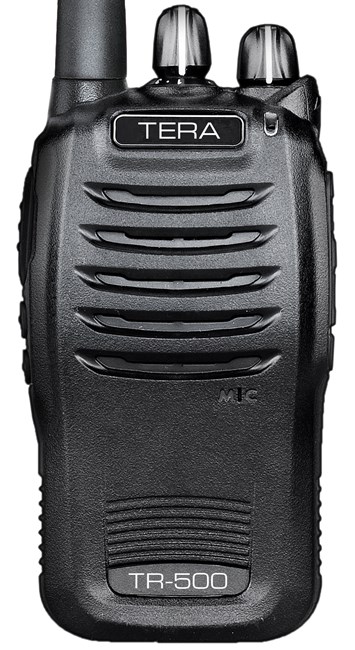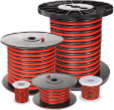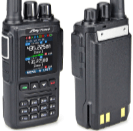
TERA TR-500 Dual Band VHF/UHF 16 Channel Handheld Commercial Radio
- $129.99
- In Stock
- SKU: TR-500
Customer Reviews
Tera TR-500 By Guest
We have been purchasing Tera TR-500 radios for several years it meets our needs and is type excepted and easy to program. This nice compact handheld besides being dual band, is very durable, compact & lightweight and has very good audio. Our staff enjoy carrying these all day.
Was this review helpful? Yes No (1/0)
Does What It Says It Will Do By Carl
The Tera TR-500 is a compact dual band Part 90 certificated radio, simple to operate. It appears to meet the published specs from my preliminary testing. Receiver sensitivity is good, about 0.1uv with no squelch, about 0.15uv with squelch set to 3. It uses the same programming cable as the HYT series radios (e.g., HT600), and I would presume (but have not verified) the same speaker mic (same pin spacing). For a basic 16 channel radio the end user can't screw up, this does the job. The FCC ID number (2ACK8TR500)is properly printed on the manufacturer label. I have a quantity of 16 channel UHF HYT radios that I've had in service for several years; this (from the same manufacturer) appears to be of comparable quality. I bought one to evaluate, and will probably buy a quantity when funding is available. From what I can tell, the radio appears to be fully Part 90 compliant. An added bonus is it permits wide band programming in the US Ham bands (but narrow only outside the ham bands, which is required).
While scanning is not something I would normally do with this radio, it does permit scanning and has an unusual feature. You can program all 16 channels, and set a function button to start/stop scanning. Or, you can omit channel 16 and when you turn the knob to channel 16 it will start scanning (based on a programming setting). The manual discusses the channel 16 setting and I was concerned at the loss of a channel to be able to use scanning, but you can enable scanning and have all 16 channels programmed.
If you have voice prompts enabled, it announces the function of the side buttons when you press them, handy for a radio without a display.
Minor criticisms.
1. If you program a channel as low power, and you enable the high/low power switch on one of the buttons, you can change that channel to high power. So if you are licensed on lower power and want to make sure the operator cannot set the power to high, you would have to not enable the high/low power toggle (which you can do in programming).
2. There is no talk-around function. If you need that capability you have to eat two memory channels and program the channel as a repeater in one, and direct in the other.
While scanning is not something I would normally do with this radio, it does permit scanning and has an unusual feature. You can program all 16 channels, and set a function button to start/stop scanning. Or, you can omit channel 16 and when you turn the knob to channel 16 it will start scanning (based on a programming setting). The manual discusses the channel 16 setting and I was concerned at the loss of a channel to be able to use scanning, but you can enable scanning and have all 16 channels programmed.
If you have voice prompts enabled, it announces the function of the side buttons when you press them, handy for a radio without a display.
Minor criticisms.
1. If you program a channel as low power, and you enable the high/low power switch on one of the buttons, you can change that channel to high power. So if you are licensed on lower power and want to make sure the operator cannot set the power to high, you would have to not enable the high/low power toggle (which you can do in programming).
2. There is no talk-around function. If you need that capability you have to eat two memory channels and program the channel as a repeater in one, and direct in the other.
Was this review helpful? Yes No (33/2)
Write a review of this product and share your opinion with others.




